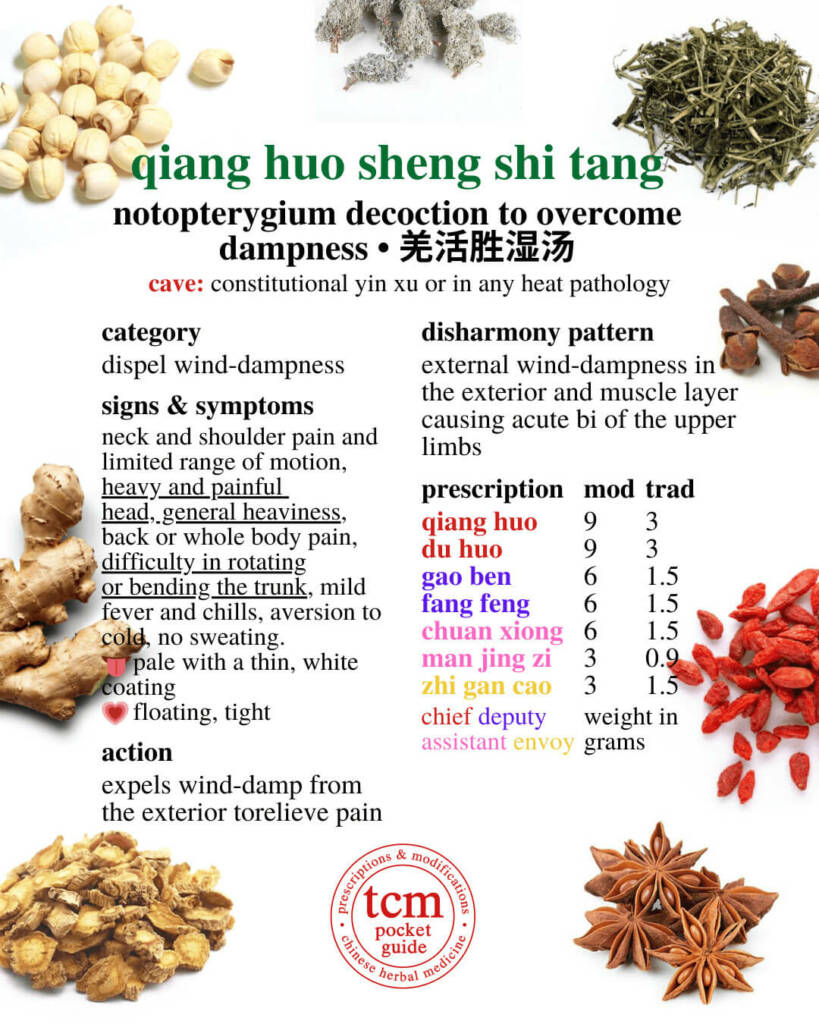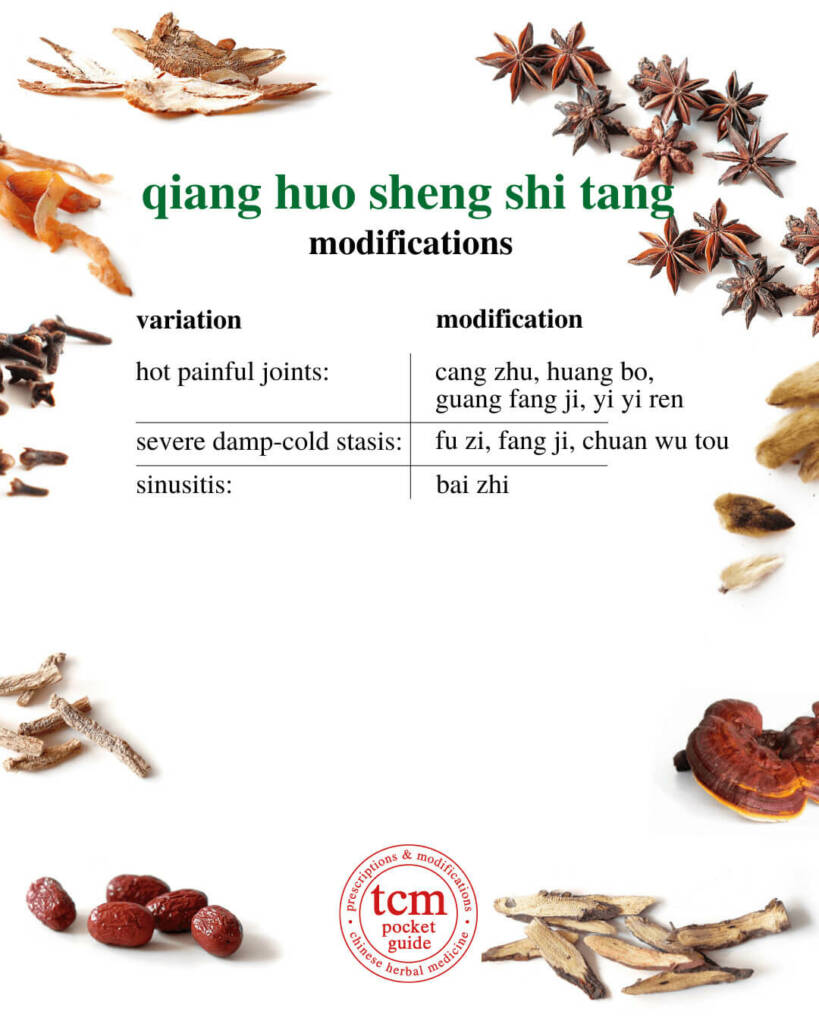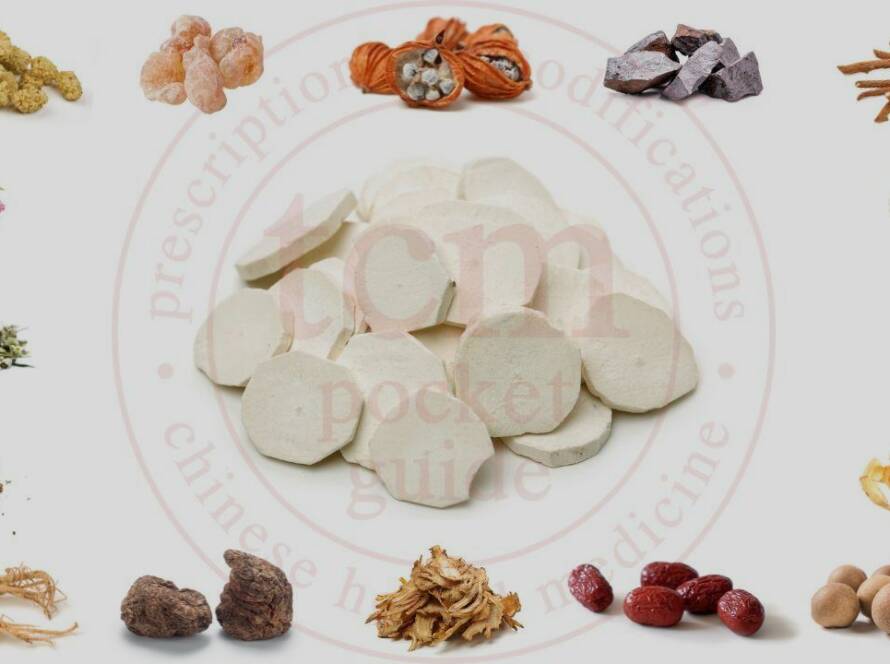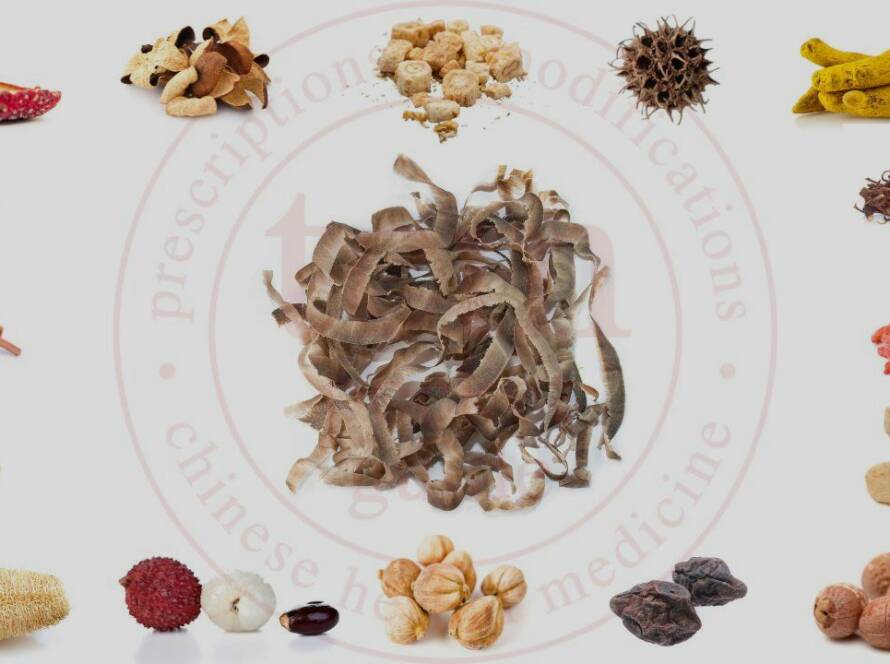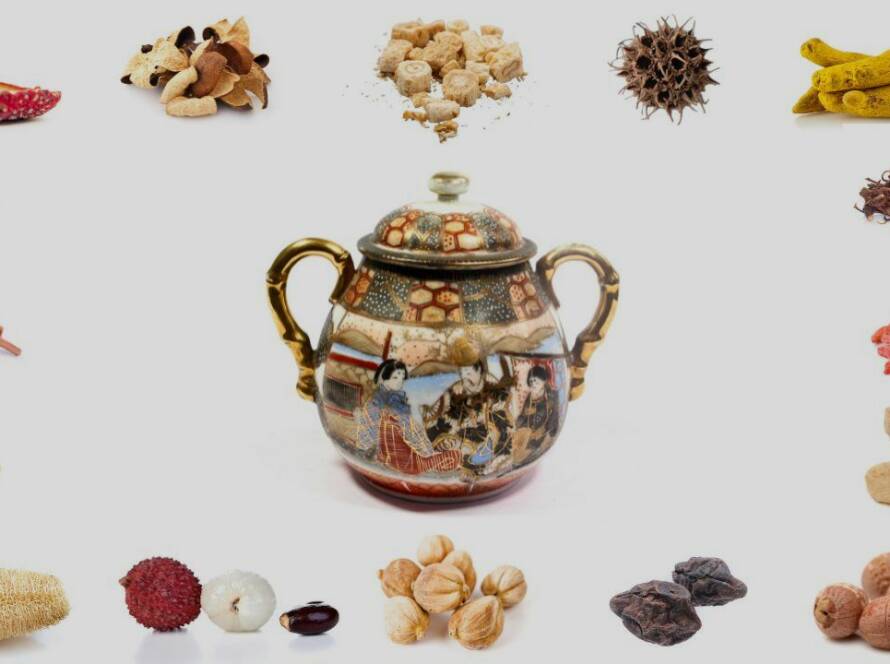qiāng huó shèng shī tāng is used for patterns with
external wind-dampness
symptoms indicating the use of qiāng huó shèng shī tāng
heavy, painful head, stiff neck, generalized sensation of heaviness, and muscle ache, back pain, difficulty bending or rotating the trunk, slight aversion to wind and cold, no sweating, dizziness, chest oppression, tiredness, scanty urination, sciatica.
western interpretation of qiāng huó shèng shī tāng
upper respiratory tract infection, rheumatic fever, muscular headache, sciatica.
explanation of the mechanism
this is wind-dampness in the superficial aspects of the body, the exterior and muscle levels. it is commonly found in people who have caught cold after sweating profusely, or who live in a damp environment.
the chills, fever and floating pulse indicate an exterior condition. wind and dampness clog the interstices and pores and move upward to attack the head, where they cause heaviness and pain.
the greater yang channel, the most superficial of all channels, controls the exterior level of the body. when wind and dampness enter this channel there may be a generalized sensation of heaviness and pain, back pain, and difficulty in moving the trunk.
since the condition is superficial, it does not affect the tongue and the coating remains a normal white.
(bensky & barolet)

created with love in switzerland 🇨🇭
feel free to share this content:


